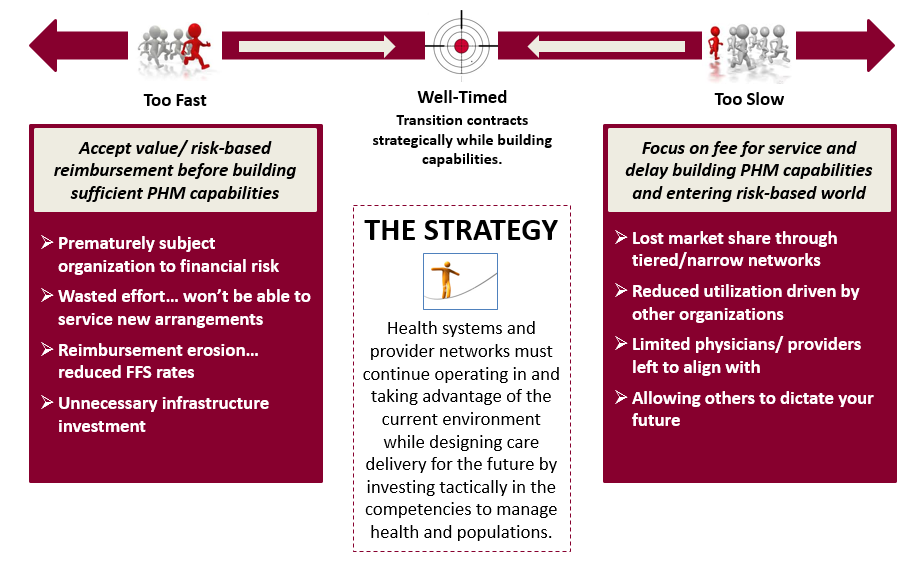
Does it have to cost millions to initiate a clinical integration strategy?
Contrary to popular belief, we have clients who have generated substantial shared savings and a significant ROI over time, without massive investments. Yes, some financial capital is required for resources the CIN providers can’t bring to the table themselves. But the size of that investment can be miniscule relative to the value it produces: improved outcomes and documentation for payers.
Here’s a four-step roadmap for developing a CIN without spending a fortune.
Step 1: Accept the challenge and adopt a culture that embraces value over volume.
This isn’t easy, but it starts at the top, in the C-Suite, with the President/CEO. In any organization, “culture eats strategy.” If the culture doesn’t exist, the strategy (regardless how great it looks on paper) won’t work.
Step 2: Strategically reposition the organization to incorporate practicing physician leaders at the table — the governing table, the management table, and the clinical table.
Physicians know the delivery system best. They’re the ones who see patients every day. They’re the ones who can generate and validate strategies that will work. Empowering physician leaders throughout your organization is a sure sign of a culture of value as opposed to volume. It establishes the trust required for CIN success.
Step 3: Formalize your network of quality providers: hospitals, physicians, PAC facilities and vendors.
Your network should encompass every type of provider patients routinely interact with before, during and after an episode of care. It is these providers your hospital will ultimately be financially responsible for under capitated contracts with payers. And it is these providers you’ll rely on to develop and implement preventive and coordinated care in a capitated environment. While politically difficult, the more selective you are, the more aggressive you are at excluding over-utilizers from the network, the more positive your ROI.
Step 4: Get your data analytics in order.
Aggregate, analyze and be prepared to report on data – financial, clinical, utilization – as needs arise. You can’t manage what you can’t measure. Data is requisite for measurement. It’s also requisite for reporting, such as to CMS to validate you’ve achieving the goals they’ve set to maximize your reimbursement.
While this step can be the most costly, it doesn’t have to be. Most hospital systems already have strong finance departments. And there are many vendors who provide aggregation, analysis and reporting that integrates financial, clinical and utilization data. Competition has remarkably increased their functionality and lowered their costs. Today, there are best-of-class vendors who provide value analytics for all the claims plus the base package of data extraction and CMS-required Group Practice Reporting Option (GPRO) data for share savings for under $100,000/year.
Data value analytics can be complex, but some very simple financial and utilization reports can quickly identify the low-hanging fruit. One such report is a stratification of your patient population by cost. It’s very likely that less than 5 percent of your population will represent more than 50 percent of your costs. A clinical focus on those patients identifying reasons for their cost and implementing practical solutions to mitigate those costs can yield significant savings.
Other down and dirty reports include drill-downs on the CMS-mandated Value-Based Purchasing initiatives. For example, huge capital outlays aren’t required to analyze readmissions and identify and stratify the reasons for them by cost. You can then repurpose existing staff to address and resolve the problems, creating a smooth readmission mitigation process that can positively impact your score and Medicare reimbursement.
Development of a clinically integrated network is a marathon, not a sprint. It won’t happen overnight, in a week or a month. It takes time, energy, passion and commitment. And it can be accomplished without spending a fortune.

